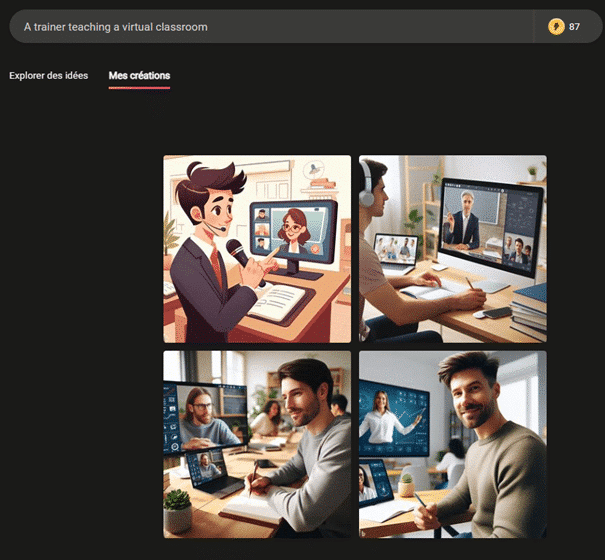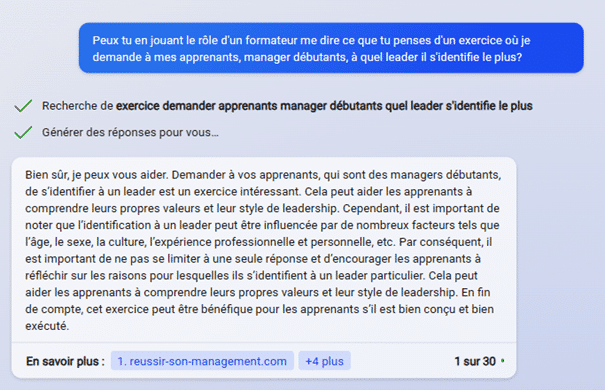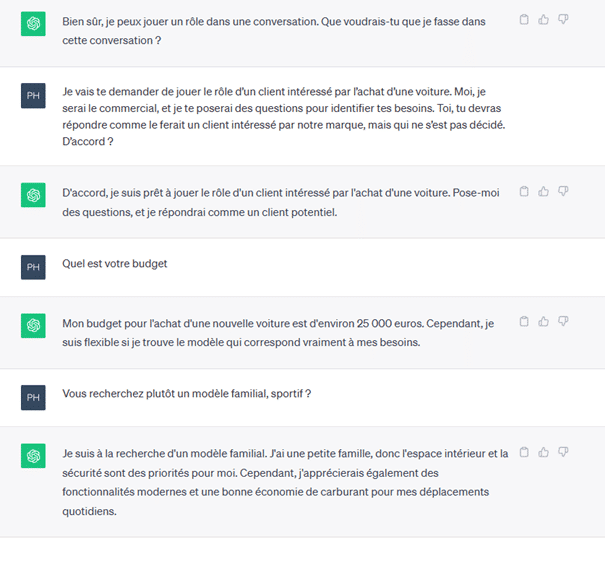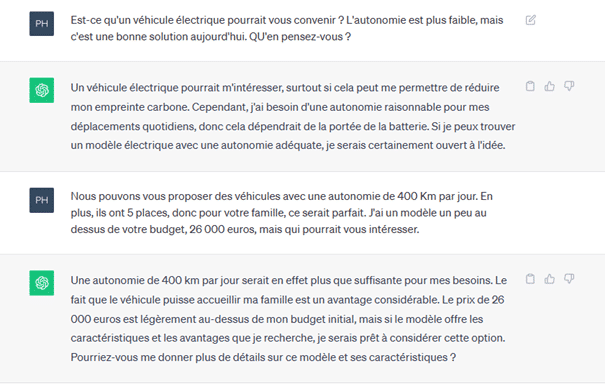It's been hard to miss the ChatGPT revolution over the last few months... Because, even if you don't feel involved at all, you're bound to have heard about it. Every day, new uses are being discovered in the workplace. There's something for everyone. IT, of course, but also marketing, communication, finance, HR... But what about training providers? How can trainers make the most of this tool? What are the pitfalls to avoid? Philippe Argouges, an expert in training engineering and needs analysis, takes a closer look.

What is ChatGPT?
This is artificial intelligence (AI). In other words, a computer programme that thinks for itself.
Inevitably, science fiction stories come to mind in which computers emancipate themselves from their creators. From 2001, A Space Odyssey à Terminator and all Isaac Asimov's novels on the subject.
In reality, things are more prosaic. AI was not born last year with ChatGPT. It is in fact the culmination of much earlier research. For example, aren't Apple's SIRI and the designer of PowerPoint AI?
Generative AI
But all these tools are nowhere near as spectacular as ChatGPT or its brethren, such as Google's Bard. These are conversational AIs, in other words software capable of holding a sensible conversation on any subject. We are also talking aboutGenerative AI because they can create content. And, in the case of ChatGPT, to generate and write text. That's the revolution.
This text generator is based on an AI engine, of which there are several versions. The current version is 4, with version 5 coming soon. This engine reacts to questions called "prompts".
Before that, it has to acquire knowledge. To do this, AI usesmachine learningor " machine learning ". At the outset, the publisher gives the AI access to a large quantity of information, oriented according to usage. Then, throughout its life, the system continues to learn on its own.
That's why different implementations of the engine don't give the same results. It all depends on how they have learned. For example, the Microsoft version available through Bing will not answer the same question as ChatGPT.
Creative AI with perfect spelling
The result is prodigious. These tools now demonstrate creativity. In this respect, they are very different from a search engine capable of finding existing texts.
What's more, their language is perfect. There are no spelling mistakes or grammatical errors in their texts. And that's no mean feat given the complexity of the French language!
"These tools can write texts and they do it very well.
So what are the current and future practical uses of these tools for vocational training?
ChatGPT, concrete and varied uses in the world of training
For trainers, ChatGPT's first use is as a "writing assistant". You can rely on it to build a training programme, write training descriptions or documentation.
Speaking of documentation, there are also image generators based on the same principle, such as DALL-E or Midjourney. You describe what you want and these tools create it from scratch. This is an interesting alternative to image banks containing free or royalty-free illustrations. So you can create original content: an image that doesn't exist anywhere else! And you don't even have to be a graphic designer...

But these tools can do more than just create content: they can provide ideas. This is a second possible use for ChatGPT in training. You can chat with ChatGPT, that's its roleits function. So you can ask them to make suggestions for activities. It becomes a moment of exchange with a virtual peer.
Example of a prompt for management training:
Playing the role of a trainer, can you tell me what you think of an exercise where I ask my learners, novice managers, which leader they most identify with?
ChatGPT's response was interesting. He then pointed out that cultural factors should be taken into account. He suggested that this exercise be followed by a reflection on the reasons for their choice.

Another possibility is to use it during the training session. For example, to simulate discussions with a customer during simulation exercises. ChatGPT then becomes a real training assistant.


What are the limits of ChatGPT?
Firstly, no one verifies the knowledge acquired by these conversational AIs. They rely on what they find on the Internet. We know nothing about their ability to sort and differentiate between real information and fake news. Conspiracy theories are highly visible on the Internet. There is therefore a risk that they will be over-represented in the information that feeds these AIs. For trainers, this means keep a critical eye on their creations. In other words, they are just tools. Using an AI doesn't mean you have nothing left to do.
From hallucination to plagiarism: vigilance is still required
What's more, these tools are creative generators: when they don't know, they invent. So they give the wrong answer. This is calledhallucination AI. The reason for this? The information may not be up to date, which is easy to correct. But there may also be a propensity to invent or to confuse fact with fiction. For example, ChatGPT can sometimes provide completely false biographies for certain personalities, particularly politicians.
Finally, there is the problem of intellectual property. These tools are inspired by what they find. Sometimes the line between inspiration and plagiarism is blurred. AI creations are not always original. In the United States, for example, 17 authors, including George R. R. Martin (The Iron Throne) or John Grisham (The firm)recently filed a complaint against the creator of ChatGPT for "large-scale theft". In their view, the data on which ChatGPT is based belongs to the authors.
Ultimately, who owns the texts and images generated by these tools? The software designer, the person who thought up the prompt or the person whose ideas inspired its creation? For the moment, the answer is unclear and varies from country to country.
With the exponential development of the possibilities offered by these tools and some future case law, the answer will no doubt emerge soon. In the meantime, it's up to training professionals to learn how to make the most of them!





